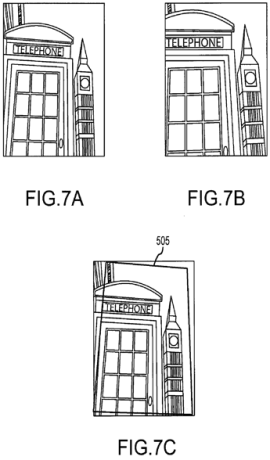Apple interested in automatic tilt correction for iPhone camera
Apple's filing with the U.S. Patent & Trademark Office is entitled "Image capture device having tilt and/or perspective correction" and describes an invention that would measure distortion using a combination of an orientation measurement, accelerometer data and a "distance measurement device," such as an ultrasonic device. Corrections would occur on-the-fly, or measurements could be stored along with the photo for later correction.
"In some embodiments, the method may include reading an orientation measurement associated with a relative position of an image capture device with respect to an object, determining if the orientation measurement is less than a threshold, and in the event that the orientation measurement is less than the threshold, correcting an image obtained by the image capture device," the application read.
Apple sees the invention as useful because users often find it difficult to steady mobile devices when taking a picture. The filing notes that post-processing is able to correct distortion, but adds that it often requires "sophisticated image processing software and/or a substantial involvement by the user."
Image credit: CNet
The measurements would be stored in the header of the image data for later adjustment. The camera application would display "dynamic crop lines" to allow a user to adjust the distortion. In addition to the use of an ultrasonic device, the application describes the use of GPS data and AF measurements to determine the distance of a photograph's subject.
Apple notes that the patent has "broad applications" and could apply to desktops and "wristwatches with integrated cameras," in addition to portable electronic devices such as cameras or cell phones. The filing also extends the invention to apply to moving images and/or video, though the bulk of the invention's description relates to still images.
Apple first filed for the patent on Dec. 22, 2009. The invention is credited to Jason Chen, Brandon Slack and David Simon.
Earlier this year, the USPTO revealed a patent application that detailed a 3D picture taking system utilizing multiple rear-facing cameras on a device like an iPhone.
Apple's iPhone 4 recently surpassed popular digital SLR models from Nikon and Canon to become the most popular camera on the Flickr photo sharing service. Actually, the iPhone likely passed up other cameras months ago, as Flickr has admitted that it is unable to accurately label all iPhone photos, especially ones submitted by third-party services such as Instagram.
The growing popularity of the iPhone camera has attracted the attention of giants in the photography and camera industry. Kodak sued Apple and BlackBerry maker Research in Motion last year over a patent for previewing images.
The U.S. International Trade Commission was scheduled to rule on the Kodak and Apple case on Friday, but the federal agency has postponed the decision until next week. Kodak has said the royalties from a ruling in its favor could amount to more than $1 billion.
 Josh Ong
Josh Ong














 Amber Neely
Amber Neely
 Thomas Sibilly
Thomas Sibilly
 AppleInsider Staff
AppleInsider Staff
 William Gallagher
William Gallagher
 Malcolm Owen
Malcolm Owen
 Christine McKee
Christine McKee










20 Comments
Jason Chen works for Apple?
http://noisetech-software.com/Perspectives.html
I use it as a test bed for things.
The tower of Pisa will finally be straightened.
I don't understand - if the iPhone is the most popular camera already, why would it "likely pass up (sic) other cameras"? Isn't that a given?
Ultimate trolling: Waiting for any Apple updates from the patents website just to fuel new speculation and get more hits.